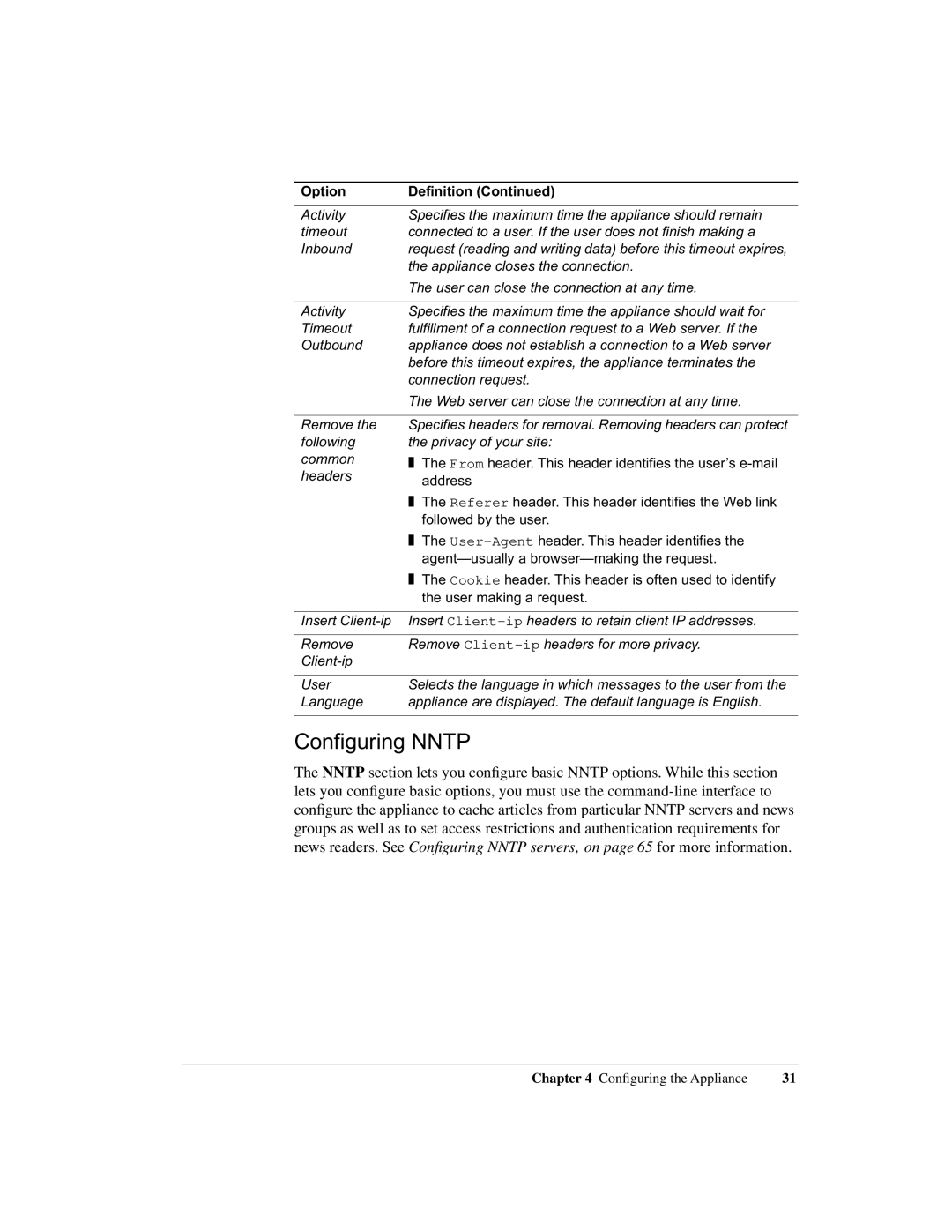
Option | Definition (Continued) | |
|
| |
Activity | Specifies the maximum time the appliance should remain | |
timeout | connected to a user. If the user does not finish making a | |
Inbound | request (reading and writing data) before this timeout expires, | |
| the appliance closes the connection. | |
| The user can close the connection at any time. | |
|
| |
Activity | Specifies the maximum time the appliance should wait for | |
Timeout | fulfillment of a connection request to a Web server. If the | |
Outbound | appliance does not establish a connection to a Web server | |
| before this timeout expires, the appliance terminates the | |
| connection request. | |
| The Web server can close the connection at any time. | |
|
| |
Remove the | Specifies headers for removal. Removing headers can protect | |
following | the privacy of your site: | |
common | ❚ The From header. This header identifies the user’s | |
headers | ||
address | ||
| ||
| ❚ The Referer header. This header identifies the Web link | |
| followed by the user. | |
| ❚ The | |
| ||
| ❚ The Cookie header. This header is often used to identify | |
| the user making a request. | |
|
| |
Insert | Insert | |
|
| |
Remove | Remove | |
| ||
|
| |
User | Selects the language in which messages to the user from the | |
Language | appliance are displayed. The default language is English. | |
|
|
Configuring NNTP
The NNTP section lets you configure basic NNTP options. While this section lets you configure basic options, you must use the
Chapter 4 Configuring the Appliance | 31 |
